Related Research Articles
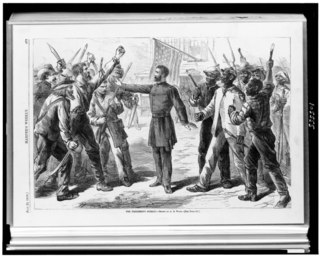
The Bureau of Refugees, Freedmen, and Abandoned Lands, usually referred to as simply the Freedmen's Bureau, was a U.S. government agency of early post American Civil War Reconstruction, assisting freedmen in the South. It was established on March 3, 1865, and operated briefly as a federal agency after the War, from 1865 to 1872, to direct "provisions, clothing, and fuel...for the immediate and temporary shelter and supply of destitute and suffering refugees and freedmen and their wives and children".

The African Methodist Episcopal Zion Church, or the AME Zion Church (AMEZ) is a historically African-American Christian denomination based in the United States. It was officially formed in 1821 in New York City, but operated for a number of years before then. The African Methodist Episcopal Zion Church adheres to Wesleyan-Arminian theology.

John Gregg Fee was an abolitionist, minister and educator, the founder of the town of Berea, Kentucky, The Church of Christ, Union in Berea (1853), Berea College (1855), the first in the U.S. South with interracial and coeducational admissions, and late in his life another congregation that would become First Christian Church 2 blocks from his first. (1890). During the American Civil War, Fee worked at Camp Nelson to have facilities constructed to support freedmen and their families, and to provide them with education and preaching where the formerly enslaved men who had joined the Union Army were taken to be mustered out in the last years of the Civil War.
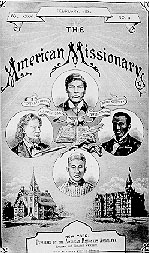
The American Missionary Association (AMA) was a Protestant-based abolitionist group founded on September 3, 1846 in Albany, New York. The main purpose of the organization was abolition of slavery, education of African Americans, promotion of racial equality, and spreading Christian values. Its members and leaders were of both races; The Association was chiefly sponsored by the Congregationalist churches in New England. The main goals were to abolish slavery, provide education to African Americans, and promote racial equality for free Blacks. The AMA played a significant role in several key historical events and movements, including the Civil War, Reconstruction, and the Civil Rights Movement.
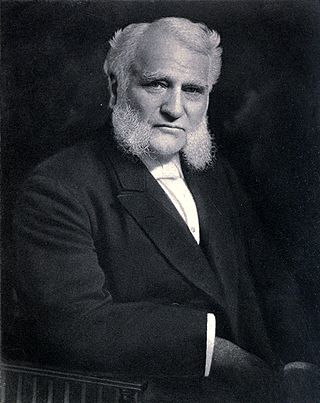
Joseph Crane Hartzell was an American Missionary Bishop of the Methodist Episcopal Church who served in the United States and in Africa.
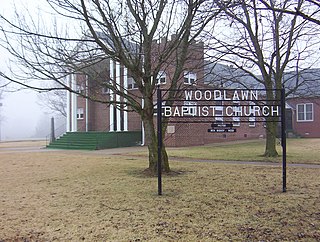
Woodlawn Baptist Church and Cemetery, also known as Woodlawn Missionary Baptist Church, is a historic building in Nutbush, Haywood County, Tennessee, in the United States. It is on Woodlawn Road, south of Tennessee State Route 19.

Daniel Alexander Payne was an American bishop, educator, college administrator and author. A major shaper of the African Methodist Episcopal Church (AME), Payne stressed education and preparation of ministers and introduced more order in the church, becoming its sixth bishop and serving for more than four decades (1852–1893) as well as becoming one of the founders of Wilberforce University in Ohio in 1856. In 1863, the AME Church bought the college and chose Payne to lead it; he became the first African-American president of a college in the United States and served in that position until 1877.

Lewis Tappan was a New York abolitionist who dedicated his efforts to securing freedom for the enslaved Africans aboard the Amistad. He was born in Northampton, Massachusetts, into a Calvinist household.
Tullahassee Mission was a Presbyterian mission and school, founded on March 1, 1850, in the Creek Nation, Indian Territory by Robert Loughridge. This Presbyterian minister had been serving there since 1843, when he founded Koweta Mission. This mission was also originally built for Muscogee Creek students, and the community of Tullahassee developed there.
Walden University was a historically black college in Nashville, Tennessee. It was founded in 1865 by missionaries from the Northern United States on behalf of the Methodist Church to serve freedmen. Known as Central Tennessee College from 1865 to 1900, Walden University provided education and professional training to African Americans until 1925.

Erastus Milo Cravath (1833–1900) was a pastor and American Missionary Association (AMA) official who after the American Civil War, helped found Fisk University in Nashville, Tennessee, and numerous other historically black colleges in Georgia and Tennessee for the education of freedmen. He also served as president of Fisk University for more than 20 years.
Edward Parmelee Smith (1827–1876) was a Congregational minister in Massachusetts before becoming Field Secretary for the United States Christian Commission during the American Civil War. In official positions with the American Missionary Association (AMA), he was a co-founder of Fisk University and other historically black colleges established in the South for the education of freedmen. Beginning in 1873, he served as commissioner of Indian Affairs under President Ulysses S. Grant. In 1875, he was selected president of Howard University, but died on a trip in Africa in 1876 before taking office.
The civil rights movement (1865–1896) aimed to eliminate racial discrimination against African Americans, improve their educational and employment opportunities, and establish their electoral power, just after the abolition of slavery in the United States. The period from 1865 to 1895 saw a tremendous change in the fortunes of the Black community following the elimination of slavery in the South.
The Freedmen's Colony of Roanoke Island, also known as the Roanoke Island Freedmen's Colony, or "Freedman's Colony", was founded in 1863 during the Civil War after Union Major General John G. Foster, Commander of the 18th Army Corps, captured the Confederate fortifications on Roanoke Island off North Carolina in 1862. He classified the slaves living there as "contraband", following the precedent of General Benjamin Butler at Fort Monroe in 1861, and did not return them to Confederate slaveholders. In 1863, by the Emancipation Proclamation, all slaves in Union-occupied territories were freed.

The history of Methodism in the United States dates back to the mid-18th century with the ministries of early Methodist preachers such as Laurence Coughlan and Robert Strawbridge. Following the American Revolution most of the Anglican clergy who had been in America came back to England. John Wesley, the founder of Methodism, sent Thomas Coke to America where he and Francis Asbury founded the Methodist Episcopal Church, which was to later establish itself as the largest denomination in America during the 19th century.

The Amistad Research Center (ARC) is an independent archives and manuscripts repository in the United States that specializes in the history of African Americans and ethnic minorities. It is one of the first institutions of its kind in the United States to collect African American ethnic historical records and to document the modern Civil Rights Movement.
Lincoln Academy was an elementary school and secondary school, including boarding students, for African-American children in Kings Mountain, North Carolina, United States. It was founded in 1886 by Miss E. C. Prudden.
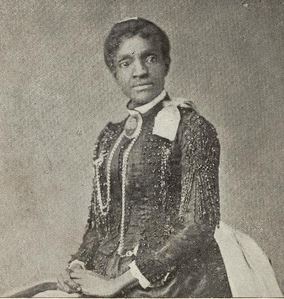
Nellie A. Ramsey Leslie was notable as a teacher, musician and composer, working in Louisiana and Mississippi, and then in Indian Territory and Corpus Christi, Texas, where she founded a musical conservatory for girls. Born into slavery in Virginia, after emancipation she gained schooling in Ohio and moved to Louisiana to teach for the Freedmen's Bureau. She attended the Normal School of Straight University and gained further training as a teacher. Teaching in Louisiana, Mississippi, Indian Territory, and Texas, Leslie educated freedmen and their children.

Freedmen's Schools were educational institutions created soon after the abolition of slavery in the United States to educate freedmen. Due to the remaining opposition to equality between blacks and whites, it was difficult for the formerly enslaved to receive a proper education, among a myriad of other things. Schools were made especially for blacks but were open to anyone regardless of race. These schools were far from perfect; however, they did give African Americans hope and opportunity for their future.
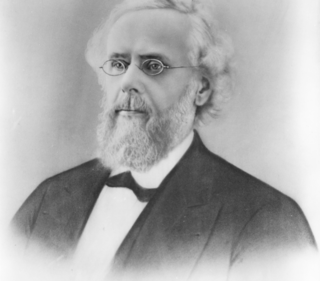
Samuel Stanford Ashley was an American Christian minister and educator who served as the North Carolina Superintendent of Public Instruction from 1868 to 1871.
References
| Archives at | ||||||
|---|---|---|---|---|---|---|
| ||||||
| How to use archival material |
- ↑ Boone, Richard Gause (1971). "The Freedmen's Aid Society". Education in the United States: Its History from the Earliest Settlements. Freeport, New York: Books for Libraries Press. p. 351. ISBN 0-8369-5924-8. OCLC 210558 . Retrieved 20 February 2009.
- 1 2 Clara Merritt DeBoer, "Blacks and the American Missionary Association" Archived 2009-01-06 at the Wayback Machine , United Church of Christ, 1973, accessed 12 Jan 2009
- ↑ Luccock, Halford F.; Hutchinson, Paul; Goodloe, Robert W. (1926). The Story of Methodism. Nashville, TN: Parthenon Press.
- 1 2 Freedmen's Aid Society Records Archived 2012-10-11 at the Wayback Machine 1866-1932, Robert W. Woodruff Library, Atlanta University Center. Accessed October 18, 2012.